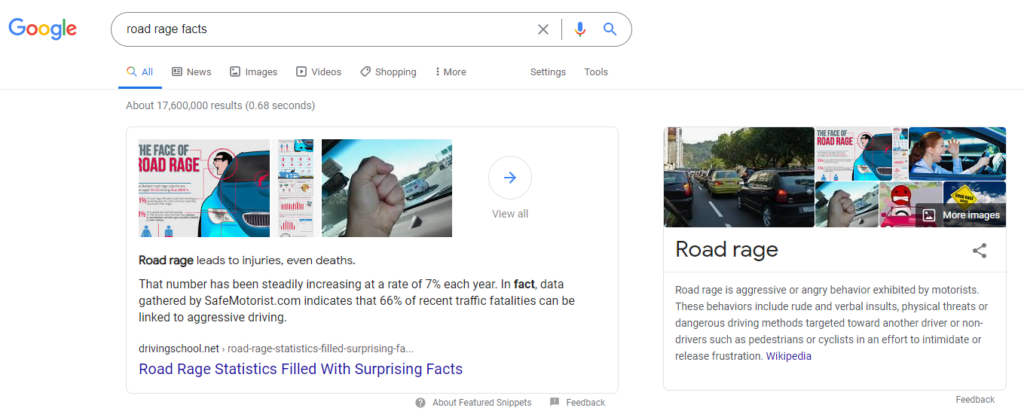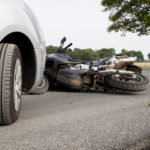
These road rage facts and aggressive driving statistics provide the example of why sites like StopAgressiveDriving.com exist. This problem is completely avoidable yet so rampant. We can start aggressive driving behavior and lower incidents of road rage
The first step to overcoming is understanding. So before we dive into road rage facts, here are some tidbits that will allow us to understand more about aggressive driving.
Understanding Aggressive Driving
The National Highway Transportation Safety Administration of the U.S. has defined aggressive driving as the operation of a motorized vehicle in a way that put others and their property into harm’s way.
Common Forms of Aggressive Driving
- Racing or speeding
- Riding so close behind another vehicle or tailgating
- Preventing others from changing lanes or lane blocking
- Sudden or frequent changing of lanes
- Failure to yield the right of way, signaling, or observe traffic signs
- Even if it is not an emergency violators honk at other drivers
- Driving on the median, the shoulder, or the sidewalk
- Making obscene gestures at others while in traffic
All forms of aggressive driving are among the causes of millions of accidents in the U.S. alone each year. Of course, if you do any of these, you will be issued a ticket for the violation committed.
Road Rage Facts

Road rage is a serious problem on America’s roads and the numbers say it all:
- 8 out of 10 drivers experience road rage.
- Distracted drivers kill almost 9 people a day in car crashes.
- 94% of car crashes are due to human error stemming from road rage.
- 53% of drivers consider speeding normal.
- 66% of deaths from car crashes are linked to aggressive driving.
- 50% of drivers will become aggressive drivers because of other drivers’ aggressive driving.
- 66% of all traffic fatalities are linked to road rage.
- 37% of road rage incidents involve a firearm.
- 2% of drivers involved in road rage incidents admit that revenge was the cause. Remember that’s 2% admit, but the actual number could be much higher.
- Almost 50% of all road rage incidents are triggered by one driver cutting off another.
- 44% of women reported experiencing some form of road rage every day.
- Roughly 30% of all drivers spend 40 hours stuck in traffic jams every year.
Understanding Road Rage
On the other hand, road rage is when the driver of a motorized vehicle has committed a violent act against someone on the road. In other words, it is known as reckless driving.
Common Forms of Road Rage
- Using the vehicle that you are driving as a weapon
- Getting back at the other driver by intentionally bumping your vehicle against his or her car
- Getting into a reckless race with another vehicle on the road
- Getting out of your car and waving a weapon with the intent of harming other drivers
The difference between aggressive driving is that road rage is a criminal offense that can send you to jail. This can happen after a series of stressful events that happen in a person’s life or while driving. But aggressive driving can also lead to road rage at some point, and as the road rage facts illustrate, that can be fatal for some.
Basically, aggressive driving is only a traffic violation, but road rage is actually a criminal offense. In fact, it is considered a willful or wanton disregard of the safety of others on the road.
Why Is It Important?
Knowing the main difference between aggressive driving and road rage is important. That is because a traffic offense can only get you a ticket while a criminal offense can get you jail time. So, there is a clear difference between the two terms.
Remember that it is so easy to turn into others given a certain circumstance. So, it is best for all drivers to understand this and to remain calm when driving. Emotions that escalate can only lead to serious consequences, such as accidents or serious injuries.
No accident should leave you wondering what’s next
Curbing Aggressive Driving

The National Highway Traffic Safety Administration said that the number one way to decrease road rage accidents is to increase the number of police on roads. This is unfortunate and we believe it’s also a call to action. We need to change the way we try to change the world. And it starts with us. If there’s one thing all these road rage facts will hopefully illustrate, it’s that the problem is with us, the drivers. We need to learn to de-escalate our feelings.
Before it escalates to road rage, aggressive driving needs to be curbed. Understandably, sometimes driving can be a frustrating endeavor, but you can always avoid it.
- Taking deep breaths
- Note that other drivers are people just like you
- Avoid retaliating to other drivers
Don’t make the roads any more dangerous than they need to be! The answer begins with you. You can stop road rage but only in one person, yourself. Be sure to focus on your driving, your reactions, and your behavior. The first step is taking control of your own driving.
Sources: https://www.nhtsa.gov/sites/nhtsa.dot.gov/files/809707.pdf











